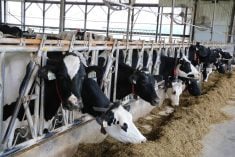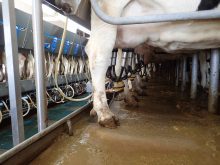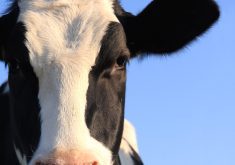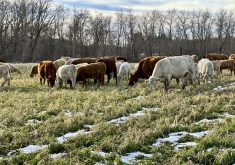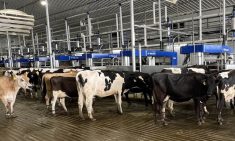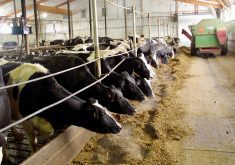A phase-out of tie-stalls in dairy barns may have minimal impact on Manitoba farms, but other portions of a new code of practice may require farmers to make changes.
“My own farm, I would experience very few changes here, but it ranges from farm to farm depending on the kind of facilities they have,” said David Wiens, chair of Dairy Farmers of Manitoba, and vice-president with the Dairy Farmers of Canada.
The National Farm Animal Care Council released its revised Code of Practice for the Care and Handling of Dairy Cattle on March 30. It will take effect on April 1, 2024.
Read Also
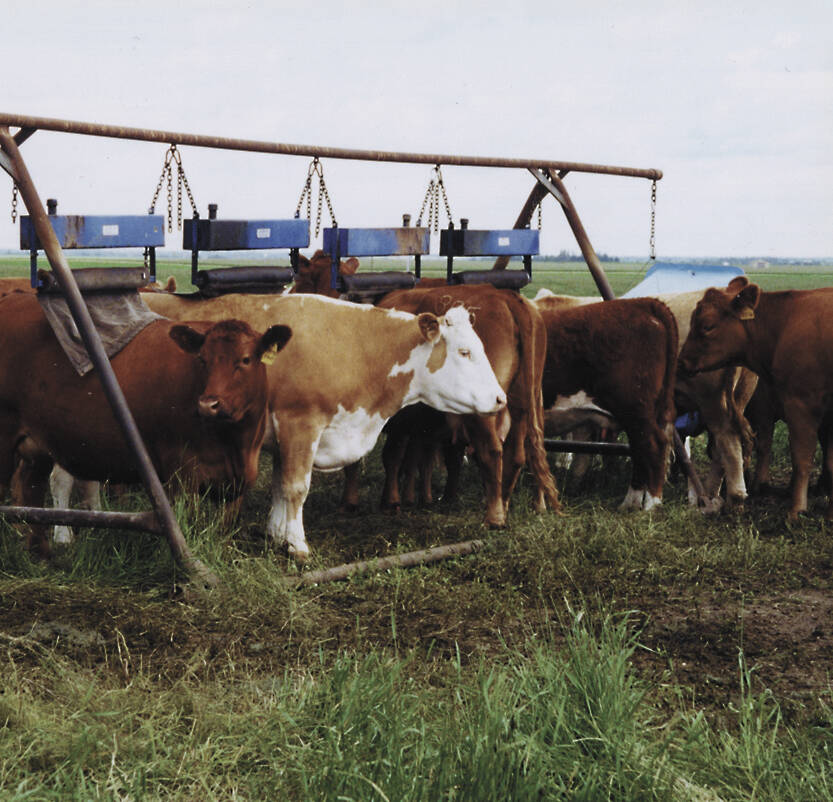
Shifting standards on cattle parasite control
Parasite product resistance has more farmers and veterinarians thinking differently about how to control issues like lice or worms.
The code forms the backbone of the Dairy Farmers of Canada’s proAction quality assurance program, to which all dairy farms must adhere.
Why it matters: Animal welfare is one of the keystones of Canada’s dairy sector and the rules governing it have been altered.
Key changes to the code involve a timeline to eliminate tie stalls for cows. Effective April 2027, cows may not be tethered continuously. New barns will be required to allow “daily, untethered freedom of movement and social interactions year-round,” the code says.
Few Manitoba dairy farms have tie-stalls, Wiens said, but they are more common in Ontario and Quebec.
A change to calf housing requirements may affect more farms in the province.
By 2031, calves must be housed in groups or pairs by four weeks of age. If they’re housed outdoors or in hutches, they may only be tethered if they can move in and out of the hutch. They must also be able to have physical contact with another calf, unless they need to be separated for health and safety reasons.
“There’s a good number of farms that have the hutches,” Wiens said.
Both the calf and cow housing changes are backed by science, he added.
“I think that we’ve come to a very solid revised code.”
The changes garnered praise from Humane Canada, a federation of humane societies and societies for the prevention of cruelty to animals. Humane Canada is one of the founding members of the council and sat on the committee that oversaw the code’s revision.
“Overall we feel positive about the improvements in the code,” said Kathy Duncan, director of national programs with Humane Canada.
Nearly two-thirds of Canadian dairy farms use tie stalls, Duncan said. The previous code of conduct took no steps toward eliminating them, she said. Though Humane Canada is disappointed in length of the phase-out periods for the changes, Duncan said they are steps in the right direction.
She highlighted requirements that address animal abuse and work to ensure low-stress handling.
“We’ve seen some pretty horrific video of different types of handling on-farm and in slaughter,” Duncan said.
There are also stronger requirements and recommendations for oversight of farm workers.
Allowed stocking density will decrease to 1.1 cows per stall in a free stall system from 1.2 cows per stall now, effective April 2027. As of April 2031, that will be reduced to one cow per stall.
Wiens said he already stocks below the allowed rate, but some farmers will need to adjust.
“We find that cows are actually more productive at a slightly lower stocking rate,” he said.
The 2023 code notes that with lower stocking rates, cows have more access to feed bunks and can spend more time lying down.
The code doesn’t include requirements for emergency preparedness planning, which is a disappointment, said Duncan. She pointed to the 2021 floods in B.C., which inundated many farms, including dairy farms. Many animals died, and other were left stranded and in dire need of food and water, according to one CBC article from November 2021.
The code contains many recommendations for emergencies, including the suggestion to develop a plan for evacuating cattle. It references “comprehensive resources to support emergency planning” that are separate from the code.
The code attracted “overwhelming interest” from Canadians, Duncan said.
Nearly 6,000 individuals or groups responded during public consultation, council documents show. Forty per cent identified as dairy producers, just over 31 per cent were concerned citizens or animal welfare advocates, and just over 17 per cent identified as consumers.
What factors affect the development of animal care codes in Canada?
The NFACC code development process aims to:
- link codes with science
- ensure transparency in the process • include broad representation from stakeholders
- contribute to improvements in farm animal care
- identify research priorities and encourage work in these priority areas
- write clearly to ensure ease of reading, understanding and implementation • provide a document that is useful for all stakeholders.
To view the full code, visit this NFACC web page (opens as a PDF).




